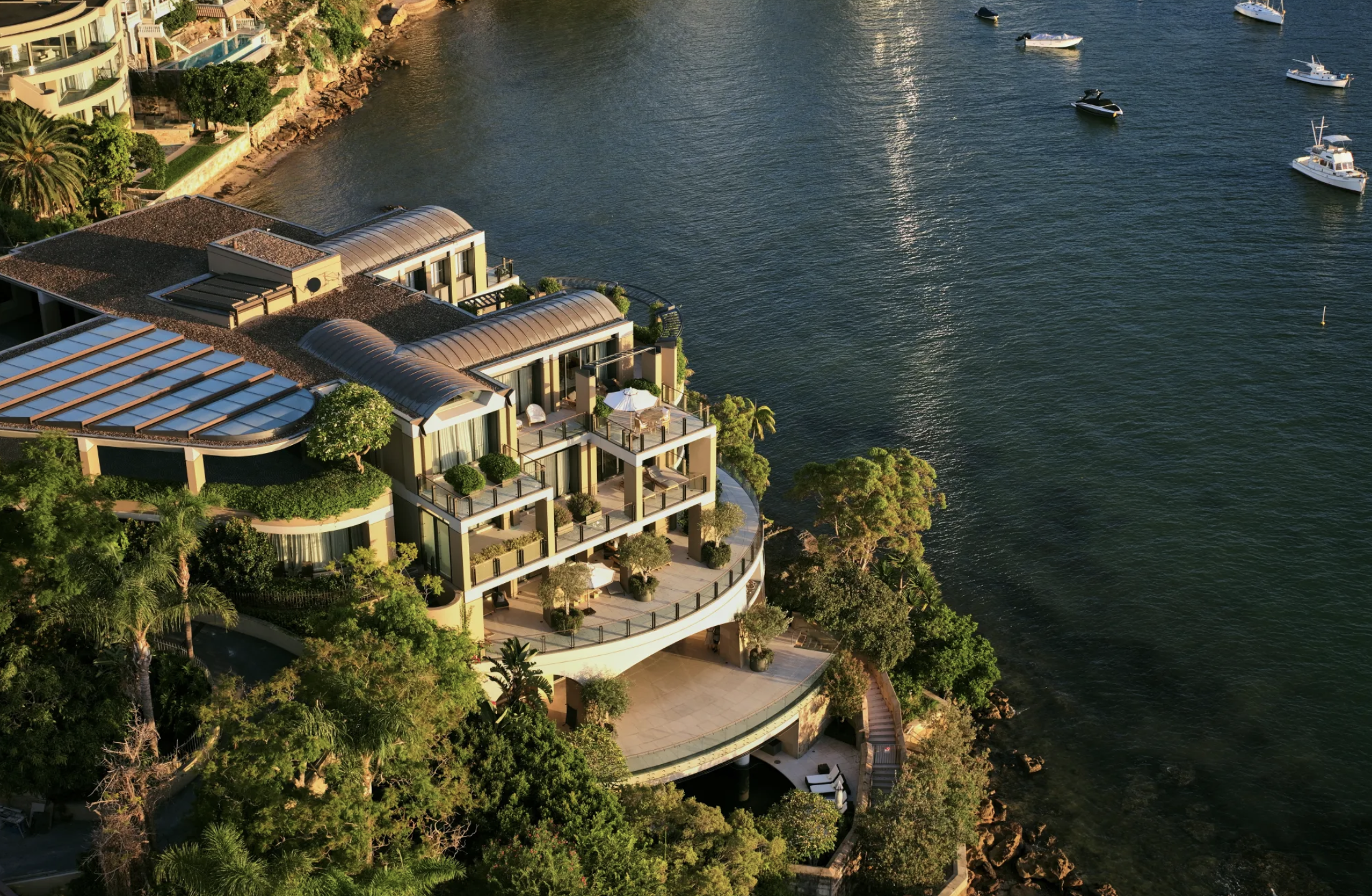Why Couture Clients Keep Buying Six-Figure Gowns
How designers brought the antiquated craft of haute couture into the future at the shows in Paris
“Nobody really needs couture, to be honest,” said Demna after his Balenciaga haute couture show this week in Paris. No, most people do not need a bespoke gown that costs six figures and takes highly trained petites mains thousands of hours to make by hand. And yet.
Partaking in the official haute couture fashion week in Paris—which is rife with arcane rules about how the clothes are made—can pay off handsomely for the few designers left in the club. For the 15 or so brands that invest in the game, including Dior and Chanel, couture can multiply press and red-carpet opportunities, and have a trickle-down effect on sales of ready-to-wear and beauty and fragrance.
Then there are the orders, which can total in the millions for a single client. Wealthy couture diehards fly in for the shows and then quickly convene in cosseted showrooms to make their selections while munching macarons. Competition can be fierce, especially when a stylist nabs a gown early on for, say, Cardi B. When you’re paying this much to look unique, no one wants a duplicate.
Couture is famously over-the-top, and this season was no exception, with rampant feathered capes, obscuring hoods and trailing trains. But philanthropist, creative director and avid couture client Fredrik Robertsson told me he found the looks very wearable this season: “less PR showstoppers and more things people actually want.” He pointed to the calmer suits and cocktail dresses at Schiaparelli, which has in the past paraded out looks such as one bearing a faux lion’s head .
Couture can sag somewhat under the weight of its history. Craftsmanship, fashion’s favourite buzzword, can be a burden too, with designers feeling the need to embellish every gown with hand-embroidered butterflies and panoplies of pearls. But the following five looks show how a range of designers are making couture relevant today.
Balenciaga’s Sculptural Chaos
Demna, who goes by a mononym, is perhaps the contemporary designer most intent on bringing couture into the future. While he’s never far from Cristóbal Balenciaga’s archive—with its dramatic shapes and volumes—he’s also a student of streetwear. So the subcultures he reveres, from goth to skate kids, were present in his deceptively casual designs. Would the founder of the house turn in his grave at metal-band T-shirts masquerading as couture? Maybe not once he realised they were in fact hand-painted over a period of several days.
This top and skirt ensemble is made from unstitched cotton-jersey elements, which are then assembled and sewn together, and knotted on the model. It is a wearable sculpture, with the casual look of a pile of T-shirts.
Chanel’s Sublime Sweatsuit
Chanel, which is between creative directors after the departure of Virginie Viard, showed its haute couture collection at the Opéra Garnier. While many of the looks echoed the vibe of the classic theatre—including a sumptuous pink silk opera coat—some of the most successful moments were surprisingly dressed down. Robertsson, the Swedish couture client, exclaimed, “Chanel even had sweatpants!”
Shown on model-du-jour Amelia Gray Hamlin, the black Chanel sweatsuit was not technically a sweatsuit. It was a wool crepe jersey set trimmed in duchesse satin ruffles and organza. It was also shown in cream, and it will sell.
Dior’s Deceptively Simple Column
Maria Grazia Chiuri, one of the only female designers making couture, showed an elegantly restrained collection in a room filled with shimmering artwork by Faith Ringgold, who died earlier this year. Nodding to an Olympic year without being too heavy-handed, Chiuri presented Grecian-inspired draped dresses, flat lace-up sandals, and sporty tanks and bodysuits.
This long asymmetrical dress in cream-coloured silk jersey over a tank top is almost sporty, and a refreshing break from some of the more hobbling ensembles on display this past week. But that’s no ordinary tank top: It’s embroidered with silver-colored micro-tube beads that have hematite-clawed jewels on them.
Schiaparelli’s Faux Feathers
Daniel Roseberry, the charming Texan who’s revamped a dusty Parisian couture house, is a true believer in the art of couture. But he’s also savvy about its press potential, so this season, the show didn’t start until paparazzi magnets Kylie Jenner and Doja Cat had arrived.
The house’s founder, Elsa Schiaparelli, was a surrealist innovator who collaborated with her friend Salvador Dalí on one of the first trompe l’oeil garments . Roseberry continues his predecessor’s taste for trickery in his work. This jacket is embroidered all over with what appear to be small white feathers, but are in fact 10,500 silk-organza snippets. Because each “feather” is handmade, the jacket takes over 7,000 hours of work to create. Worn over a pair of smart black cropped pants, it’s almost work appropriate.
Jean Paul Gaultier’s Undressed Dress
Jean Paul Gaultier, which maintains a healthy and bustling couture business, has adopted the clever strategy of inviting buzzy non-couture designers to collaborate on its collections. Simone Rocha, Glenn Martens, Olivier Rousteing and Chitose Abe of Sacai have all worked it out on the remix with Gaultier. Nicolas Di Felice, the artistic director behind Courrèges’s Pinault-backed renaissance, was up this season.
Di Felice, whose friends span Paris’s creative industries, brought his cool-kid approach to Gaultier. Many pieces featured couture details like rows of hook-and-eye closures, and partially hidden tulle corsets. But there were Di Felice signatures, too: koala-pouch front pockets, narrow trousers, tiny party dresses. This cheeky gown is carefully constructed to look like the top slip is falling away to reveal a bustier.
 Copyright 2020, Dow Jones & Company, Inc. All Rights Reserved Worldwide. LEARN MORE
Copyright 2020, Dow Jones & Company, Inc. All Rights Reserved Worldwide. LEARN MORE
Records keep falling in 2025 as harbourfront, beachfront and blue-chip estates crowd the top of the market.
A divide has opened in the tech job market between those with artificial-intelligence skills and everyone else.
JPMorgan Chase has a ‘strong bias’ against adding staff, while Walmart is keeping its head count flat. Major employers are in a new, ultra lean era.
It’s the corporate gamble of the moment: Can you run a company, increasing sales and juicing profits, without adding people?
American employers are increasingly making the calculation that they can keep the size of their teams flat—or shrink through layoffs—without harming their businesses.
Part of that thinking is the belief that artificial intelligence will be used to pick up some of the slack and automate more processes. Companies are also hesitant to make any moves in an economy many still describe as uncertain.
JPMorgan Chase’s chief financial officer told investors recently that the bank now has a “very strong bias against having the reflective response” to hire more people for any given need. Aerospace and defense company RTX boasted last week that its sales rose even without adding employees.
Goldman Sachs , meanwhile, sent a memo to staffers this month saying the firm “will constrain head count growth through the end of the year” and reduce roles that could be more efficient with AI. Walmart , the nation’s largest private employer, also said it plans to keep its head count roughly flat over the next three years, even as its sales grow.
“If people are getting more productive, you don’t need to hire more people,” Brian Chesky , Airbnb’s chief executive, said in an interview. “I see a lot of companies pre-emptively holding the line, forecasting and hoping that they can have smaller workforces.”
Airbnb employs around 7,000 people, and Chesky says he doesn’t expect that number to grow much over the next year. With the help of AI, he said he hopes that “the team we already have can get considerably more work done.”
Many companies seem intent on embracing a new, ultralean model of staffing, one where more roles are kept unfilled and hiring is treated as a last resort. At Intuit , every time a job comes open, managers are pushed to justify why they need to backfill it, said Sandeep Aujla , the company’s chief financial officer. The new rigor around hiring helps combat corporate bloat.
“That typical behavior that settles in—and we’re all guilty of it—is, historically, if someone leaves, if Jane Doe leaves, I’ve got to backfill Jane,” Aujla said in an interview. Now, when someone quits, the company asks: “Is there an opportunity for us to rethink how we staff?”
Intuit has chosen not to replace certain roles in its finance, legal and customer-support functions, he said. In its last fiscal year, the company’s revenue rose 16% even as its head count stayed flat, and it is planning only modest hiring in the current year.
The desire to avoid hiring or filling jobs reflects a growing push among executives to see a return on their AI spending. On earnings calls, mentions of ROI and AI investments are increasing, according to an analysis by AlphaSense, reflecting heightened interest from analysts and investors that companies make good on the millions they are pouring into AI.
Many executives hope that software coding assistants and armies of digital agents will keep improving—even if the current results still at times leave something to be desired.
The widespread caution in hiring now is frustrating job seekers and leading many employees within organizations to feel stuck in place, unable to ascend or take on new roles, workers and bosses say.
Inside many large companies, HR chiefs also say it is becoming increasingly difficult to predict just how many employees will be needed as technology takes on more of the work.
Some employers seem to think that fewer employees will actually improve operations.
Meta Platforms this past week said it is cutting 600 jobs in its AI division, a move some leaders hailed as a way to cut down on bureaucracy.
“By reducing the size of our team, fewer conversations will be required to make a decision, and each person will be more load-bearing and have more scope and impact,” Alexandr Wang , Meta’s chief AI officer, wrote in a memo to staff seen by The Wall Street Journal.
Though layoffs haven’t been widespread through the economy, some companies are making cuts. Target on Thursday said it would cut about 1,000 corporate employees, and close another 800 open positions, totaling around 8% of its corporate workforce. Michael Fiddelke , Target’s incoming CEO, said in a memo sent to staff that too “many layers and overlapping work have slowed decisions, making it harder to bring ideas to life.”
A range of other employers, from the electric-truck maker Rivian to cable and broadband provider Charter Communications , have announced their own staff cuts in recent weeks, too.
Operating with fewer people can still pose risks for companies by straining existing staffers or hurting efforts to develop future leaders, executives and economists say. “It’s a bit of a double-edged sword,” said Matthew Martin , senior U.S. economist at Oxford Economics. “You want to keep your head count costs down now—but you also have to have an eye on the future.”
When the Writers Festival was called off and the skies refused to clear, one weekend away turned into a rare lesson in slowing down, ice baths included.
Australia’s market is on the move again, and not always where you’d expect. We’ve found the surprise suburbs where prices are climbing fastest.























